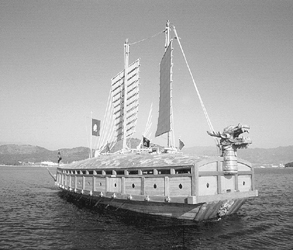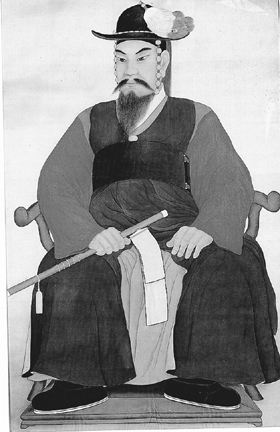The most amazing warships you’ve never heard of.

The famous Civil War battle between Monitor and Merrimac in 1862 ushered in the age of ironclad warships. Or so it is generally assumed. In fact, a brilliant Korean admiral introduced the ironclad more than 250 years earlier.
Japanese invaders landed in Korea in 1592, and won several quick victories. The country was on the verge of defeat until Korean admiral Yi Sun-Sin stepped into the breach with a fleet of innovative vessels he had helped design. He called them kobukson, or “turtle ships.” These were the world’s first ironclads, the earliest ancestors of modern warships.
The turtle ships had rounded roofs covered with iron plating and spikes to ward off boarders. Ports cut into the side of the turtle ships could accommodate up to twenty-six cannons. The fearsome warships bore a remarkable resemblance to the Civil War ironclads that would see action centuries later, except that they were powered by oarsmen instead of steam engines.
The Japanese had many more ships than the Koreans, but they found that their guns could not penetrate the armor, and their fire arrows failed to set the turtle ships ablaze. A master tactician, Admiral Yi used the kobukson to win a series of battles against the larger Japanese fleet, enabling Korea to drive off the Japanese invaders. In 1598, during a second Japanese invasion, Yi achieved an even bigger victory, destroying more than two hundred Japanese ships.
Admiral Yi was killed in that battle, and his death spelled the death of the turtle ships. No one else had the vision to use them effectively, so the age of the iron-clad warship would have to wait.
Some forty thousand Japanese sailors and soldiers were killed in Yi’s last battle. That’s more than twice the number of Spanish who died when England defeated the Armada in 1588.

There are no surviving turtle ships, or even the plans from one. This replica was built from a description contained in Admiral Yi’s diaries. Smoke could be poured out of the dragon head, a tactic Admiral Yi used to confuse and frighten the Japanese—the first recorded use of a smoke screen in a naval battle.

Like Admiral Nelson centuries later, Yi was killed at his moment of supreme victory, about to win a battle that would save his homeland. His last words: “Do not weep, do not announce my death. Beat the drum, blow the trumpet, wave the flag for advance.”